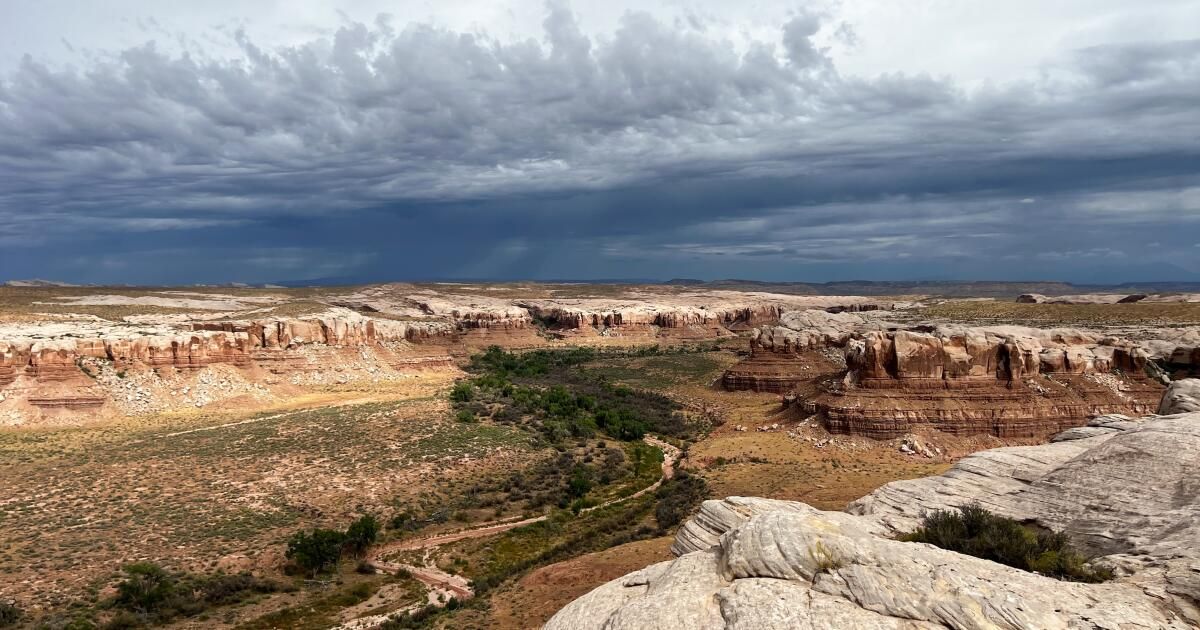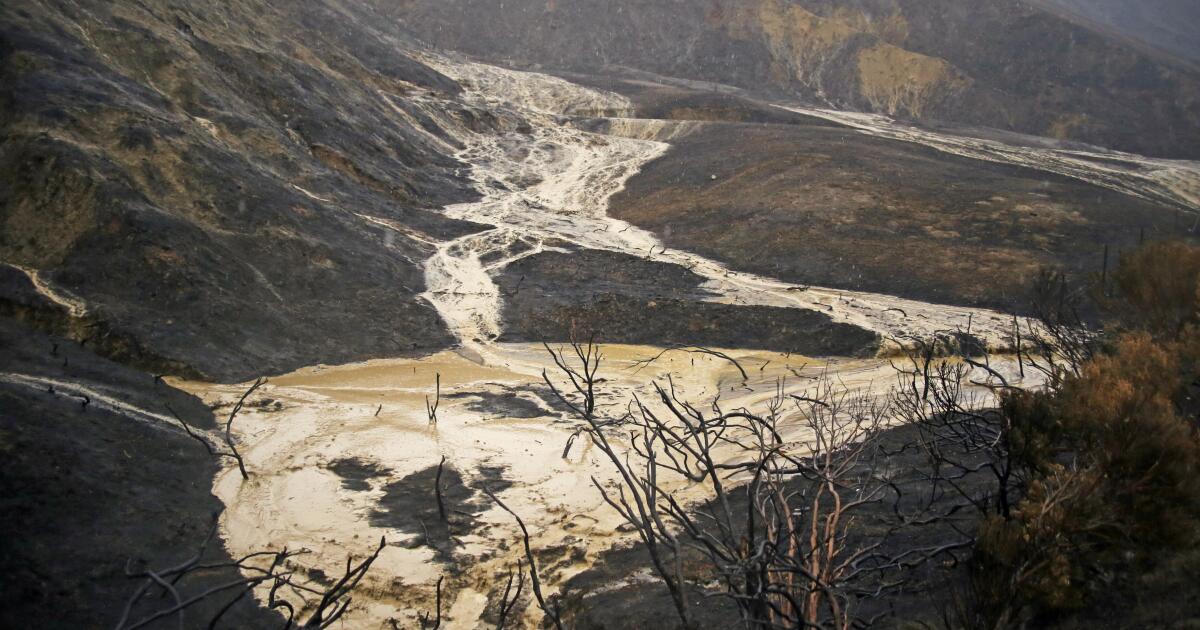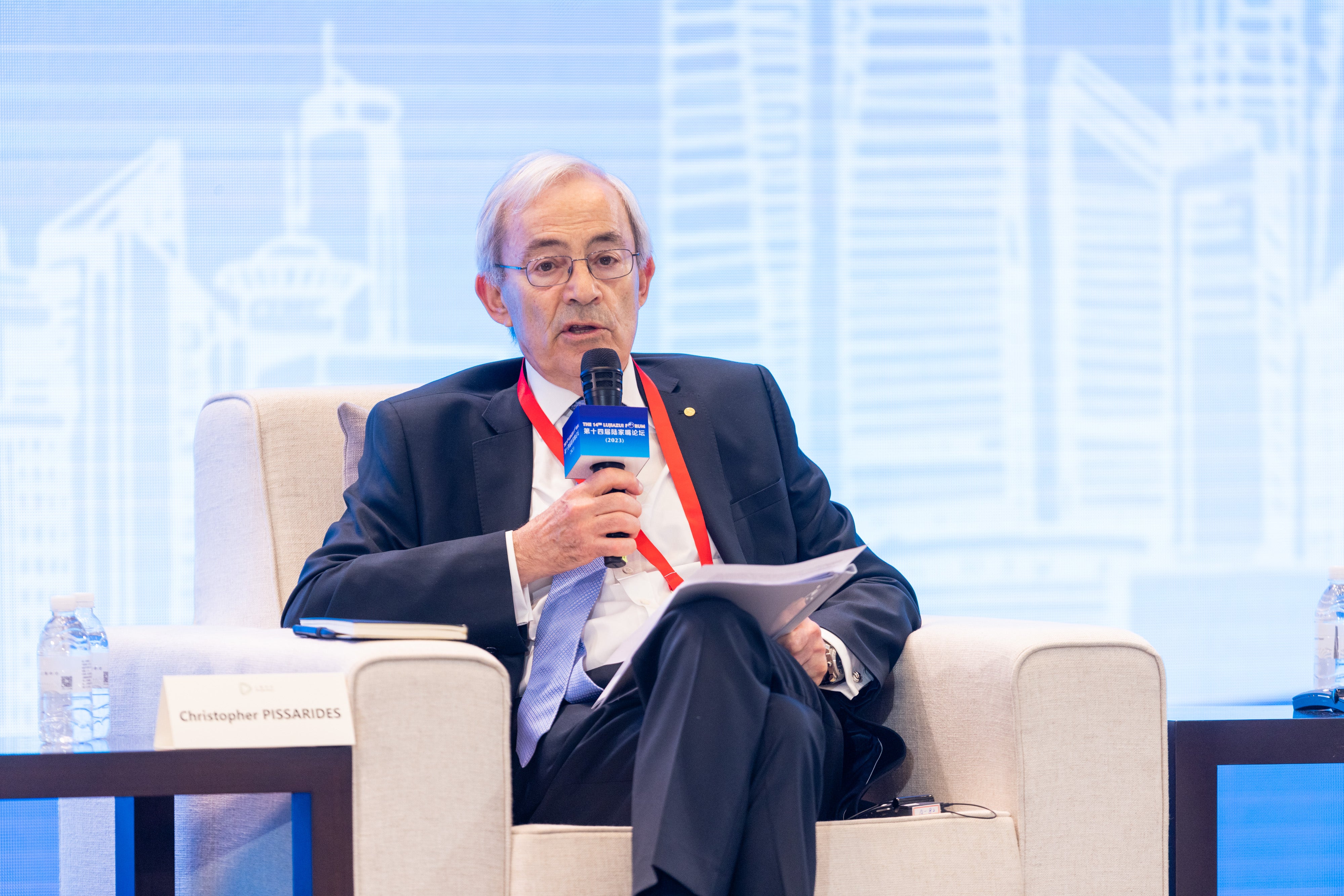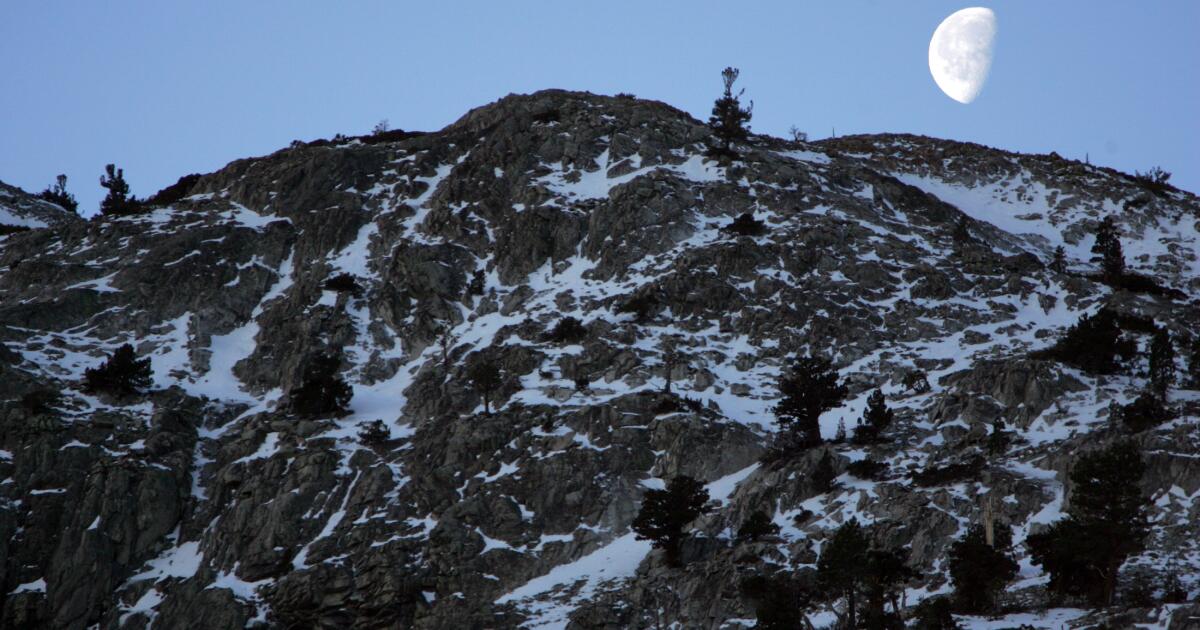They are sprawling lands with seemingly endless views and towering plateaus. The red canyons are dotted with ancient rock art and historic indigenous settlements. Normally uncontested paleontologists were so impressed by their fossils that they filed a lawsuit to try to protect the land.
Two Democratic presidents acted to preserve this rugged terrain by creating a pair of national monuments in southern Utah: bear ears and Grand Staircase- Escalante.
President Trump radically reduced the borders of the two monuments, then their status was reversed again when President Biden took office and essentially restored protections to the original lands.
Another change of course seems almost certain if Trump retakes the White House. Experts say this year's election also draws attention to a broader question: What will happen to millions of acres of land concentrated in the West and owned by the U.S. government?
Trump has already shown his desire to open up more land for oil drilling, mining and logging. And a Supreme Court heavily influenced by Trump-appointed justices has hinted that it would like to review presidents' power to create national monuments.
Trump appointees Brett M. Kavanaugh and Neil M. Gorsuch signaled this year that they want to review President Obama's expansion of Cascade-Siskiyou National Monument on the border between the states of Oregon and California. And in 2021, Chief Justice John G. Roberts Jr. announced his skepticism about another of Obama's monument designations: an underwater preserve larger than Yellowstone National Park off the coast of New England. `
“Which of the following is not like the others: (a) a monument, (b) an antiquity (defined as a “relic or monument of ancient times”), or (c) 5,000 square miles of land under the ocean?” Roberts wrote in a statement even as the court declined to take up the case.
And a controversial plan drawn up by conservatives as a blueprint for the next Republican administration would have Trump go even further if elected: It calls for him to repeal the Antiquities Law of 1906, the law that allowed presidents of both parties to make monuments of nearly 160 archaeological sites, historical monuments, and other notable scientific or historical sites.
Project 2025 Says the monument law has been overused and that public lands should remain open to a wide range of uses, including oil drilling, coal mining and recreation. That fits with Trump's promise, if he wins a second term, to “drill, baby, drill.”
Although Trump has attempted to distance himself from Project 2025, the author of the chapter on the Department of the Interior, a lawyer William Perry PendleyHe already served in the first Trump administration, as a senior official at the Bureau of Land Management.
In Project 2025, Pendley accuses the Biden administration of “implementing a vast regulatory regime,” beyond what Congress envisioned, and effectively banning nearly all “productive economic uses” of federal lands administered by the Department of the Inside.
Environmental and tribal organizations have expressed the opposite view, pointing out that it was Trump who made the largest reduction of monument-protected lands in history and who would likely grant even more corporate access to public lands in a second term.
“Project 2025 is an example of what it would be like to sell off America's natural resources and public lands to corporations with little or no regard for the environment, climate, taxpayers or wildlife,” the Center for Priorities wrote. Westerners. a nonprofit organization that has resisted pressure to transfer federal lands into state and private ownership.
Other issues – such as the economy, immigration, abortion and fair elections – have topped the agenda during the presidential campaign, while the environment, climate change and public lands priorities have taken a backseat.
This may be in part because most of the land owned by the US government is in Western states, most of which (with the exceptions of Arizona and Nevada) will not be closely decided in the presidential race.
The federal government owns less than 5% of the land east of the Mississippi River, but nearly half the acreage in 11 western states in the Lower 48 states, controlled primarily by the Bureau of Land Management and the Forest Service.
Pilot Rock rises into the clouds at Cascade-Siskiyou National Monument near Lincoln, Oregon.
(Jeff Barnard/Associated Press)
Conservatives in many of those states have been campaigning for decades to try to wrest control of some of those properties from the federal government, saying decisions about their use should be made closer to home.
Environmentalists have responded that federal officials are in the best position to protect land that is cherished by all Americans, not just those in a particular state or community.
Last week's vice presidential debate offered a rare moment in the 2024 campaign in which the candidates Markedly different views on public lands. jumped onto the national stage.
When asked about the affordable housing crisis, Republican vice presidential candidate JD Vance stated that “a lot of federal land…is not being used at all” and “could be places where we build a lot of housing.”
Democratic vice presidential candidate Tim Walz disagreed. He said open space has been kept this way “for a reason” and that the country needed a better solution than saying, “Let's take this federal land and sell it.”
Republicans in Utah celebrated in 2017 when Trump rolled back the boundaries of the sprawling Bears Ears and Grand Staircase-Escalante, which are about 100 miles apart in the southern part of the state. The then-president cut Bears Ears by about 85%, to 201,876 acres. It reduced the second monument from 1.9 million acres to just over 1 million acres.
Trump accused Democratic Presidents Obama and Clinton of setting aside too much land to protect archeology and other resources that were the subject of monument designations.
“Some people think Utah's natural resources should be controlled by a small handful of very distant bureaucrats located in Washington,” Trump said. “And guess what? “They are wrong.”
Some Utahns welcomed the Republican's new appointments and jobs that they said would likely create more flexible protections. But about 3,000 demonstrators, including tribal members, protested on the day of Trump's action. They said monument status helped protect cultural resources, including petroglyphs and centuries-old troglodyte dwellings.
The change between Democratic and Republican administrations has meant a back-and-forth between philosophies: the Trump-era management plan for Utah monuments remains in place, while the Biden administration's management plans are involved in a painstaking approval process.
The nonprofit that helps oversee conservation and programs in Grand Staircase-Escalante says it's been a challenge to keep up with the flood of new visitors who came under the Trump administration's less restrictive policies. Trump's management plan allows, for example, doubling the size of the groups that can visit the monument, up to 25.
“This doesn't seem like much, but a group of 25 people leaves behind much larger amounts of human waste and other trash compared to a group of 12,” Jackie Grant, executive director of Grand Staircase-Escalante Partners, said in an email. . “Human waste can take more than a year to decompose in the desert environment of Grand Staircase-Escalante National Monument. Now imagine the impact of between 500,000 and a million people pooping in a fairly limited desert area over the course of a year.”
The group size limit is expected to be reduced in the Biden administration's management plan, which is nearing completion.
The Trump plan also opened more remote trails for off-road vehicles to use. The opening of the V-Road in the Escalante Canyons section of the monument has left the area, under consideration for further protection as a wilderness area, marred by vandalism, trash and more human waste.
That damage came with little of the “economic expansion through natural resource extraction” that state officials had promised, Grant said.
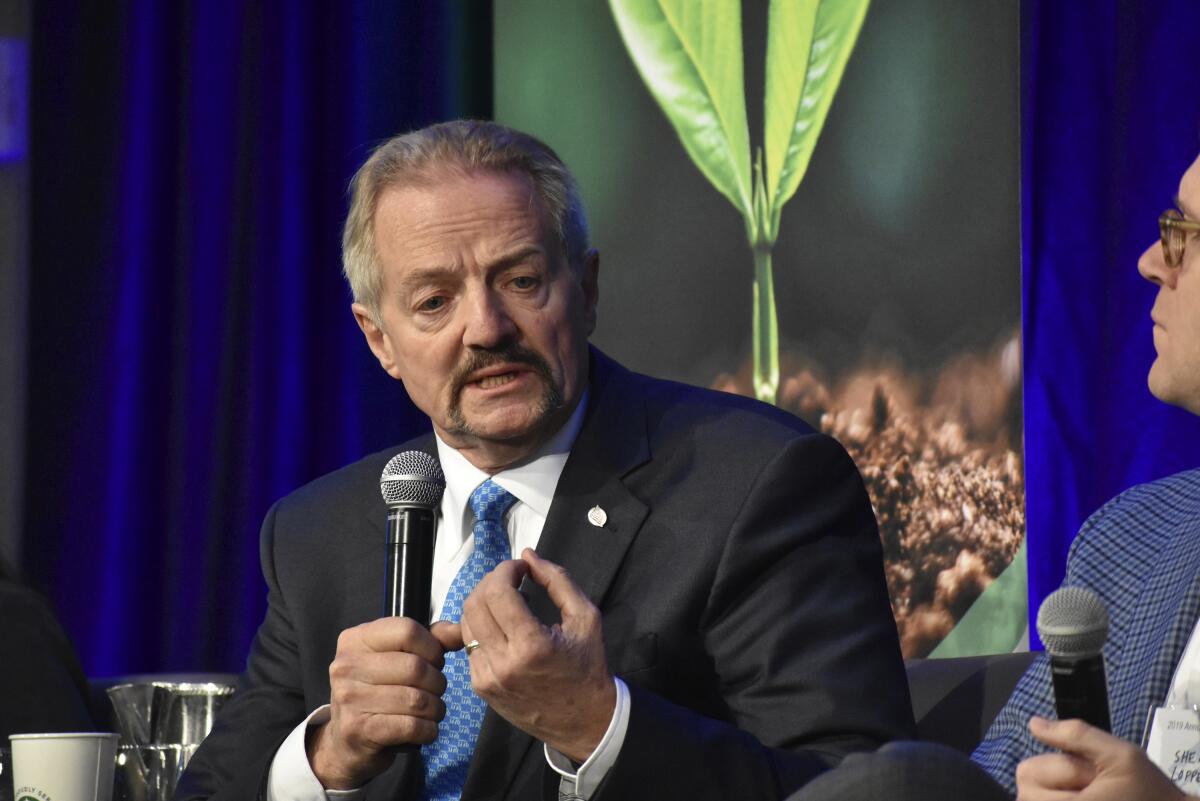
William Perry Pendley, director of the U.S. Bureau of Land Management under President Trump, wrote a section of Project 2025 calling for reducing the size of the Cascade-Siskiyou National Monument.
(Associated Press)
Pendley, the former Trump BLM official, has been fighting for greater state and local control of public lands since serving in Republican Ronald Reagan's administration. He wrote “Sagebrush Rebel,” a book about Reagan's fight against what he considered excessive federal control of Western lands.
Pendley's Project 2025 plan calls for a reduction of the Cascade-Siskiyou National Monument, saying the area should be governed by a historic agreement that predates the monument. Pendley maintains it would allow more logging on BLM lands, creating good-paying jobs and reducing fuel for future wildfires.
He Wyoming-Raised Lawyer says that many laws enacted after the Antiquities Act (to protect endangered species and wild, scenic rivers, for example) create adequate protections for the outdoors.
Defenders of Cascade-Siskiyou and other monuments say presidents have wisely used their power to create monuments. They point to the Grand Canyon in Arizona and Denali in Alaska as one of many monuments that became beloved national parks.
Dave Willis, a horse herder who lives on monument land in Oregon, has been fighting for the creation and preservation of the Cascade-Siskiyou monument for decades. Trump allies' intention to open the property to logging is just part of a “scorched earth policy with respect to all public lands,” he said.
“Americans really care about their public lands,” Willis said. “And when someone threatens them, they are not going to sit still. Trying to degrade public lands will put you on the wrong side of history.”

